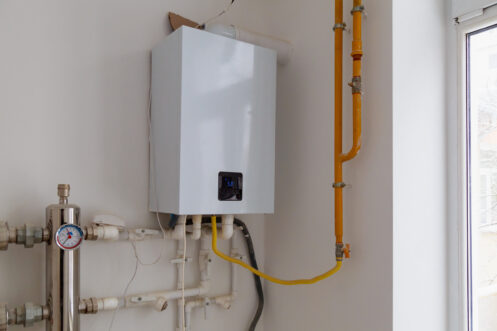Specialist Advice for Maintaining Your Home's Hot Water System
Specialist Advice for Maintaining Your Home's Hot Water System
Blog Article
We have discovered this great article relating to What Kind of Maintenance Do Water Heaters Need? listed below on the web and decided it made good sense to share it with you in this article.

Hot water is essential for daily convenience, whether it's for a revitalizing shower or washing dishes. To ensure your warm water system runs successfully and lasts much longer, routine maintenance is key. This write-up gives functional ideas and insights on how to keep your home's warm water system to prevent interruptions and costly fixings.
Intro
Preserving your home's hot water system could appear difficult, however with a couple of easy steps, you can guarantee it runs smoothly for years ahead. This guide covers everything from recognizing your warm water system to DIY upkeep ideas and knowing when to call in specialist assistance.
Importance of Preserving Your Hot Water System
Normal maintenance not only prolongs the lifespan of your warm water system however also guarantees it operates successfully. Overlooking upkeep can result in decreased performance, higher power expenses, and also premature failing of the system.
Signs Your Warm Water System Requirements Maintenance
Recognizing when your warm water system needs interest can prevent significant problems. Watch out for indicators such as inconsistent water temperature, odd sounds from the heater, or rustic water.
Purging the Water Heater
Flushing your water heater gets rid of sediment build-up, improving performance and prolonging its life.
Monitoring and Replacing Anode Rods
Anode rods protect against rust inside the container. Examining and changing them when worn out is important.
Complex Problems Calling For Professional Assistance
Instances consist of significant leaks, electrical issues, or if your hot water heater is continually underperforming.
Regular Professional Upkeep Benefits
Expert upkeep can include extensive examinations, tune-ups, and guaranteeing conformity with safety and security standards.
Examining and Changing Temperature Level Settings
Adjusting the temperature level setups ensures ideal efficiency and safety and security.
DIY Tips for Maintenance
You can do numerous maintenance tasks yourself to maintain your warm water system in leading condition.
Checking for Leakages
Consistently inspect pipelines and connections for leaks, as these can result in water damages and greater costs.
Recognizing Your Warm Water System
Prior to diving right into maintenance tasks, it's useful to comprehend the standard parts of your warm water system. Typically, this includes the water heater itself, pipelines, anode rods, and temperature controls.
Month-to-month Maintenance Tasks
Normal month-to-month checks can assist capture small concerns before they escalate.
Evaluating Pressure Alleviation Valves
Examining the stress safety valve ensures it functions correctly and prevents too much stress accumulation.
Insulating Pipes
Shielding warm water pipelines decreases heat loss and can conserve power.
When to Call an Expert
While DIY upkeep is useful, some problems require specialist expertise.
Final thought
Routine maintenance of your home's warm water system is necessary for effectiveness, longevity, and expense savings. By complying with these tips and understanding when to look for expert aid, you can guarantee a reliable supply of warm water without unexpected disturbances.
How to Maintain an Instant Hot Water Heater
Before tinkering with your hot water heater, make sure that it’s not powered on. You also have to turn off the main circuit breaker and shut off the main gas line to prevent accidents. Also turn off the water valves connected to your unit to prevent water from flowing into and out of the appliance. 2. When you’re done, you have to detach the purge valves’ caps. These look like the letter “T†and are situated on either side of the water valves. Doing so will release any pressure that has accumulated inside the valves while at the same time avoid hot water from shooting out and burning your skin. 3. When the purge valves’ caps are removed, you have to connect your hosing lines to the valves. Your unit should have come with three hoses but if it didn’t, you can purchase these things from any hardware or home repair shops. You can also get them from retail stores that sell water heating systems. Read the user’s manual and follow it to complete this task properly. When the hosing lines are connected, open the purge port’s valves. 4. You should never use harsh chemical cleaners or solutions when cleaning your unit. Make use of white vinegar instead. It should be undiluted and you’ll probably use about 2 gallons. 5. Now flush your water heater. This task should probably take about 40 minutes. We can’t give you specific directions for this because the procedure is carried out depending on the type, model and brand of your heater. With that being said, refer to the user’s manual. 6. When you’re done draining the unit, you have to turn off the purge port valves again. Remove the hosing lines that you earlier installed on each of the water valves. Put the valve caps (purge port) back in their respective places and be very careful so as not to damage the rubber discs that are found inside these caps. 7. Now that everything’s back in place, check your user’s manual again to find out how to reactivate your water heating system. 8. Once it is working, turn one of your hot water faucets on just to let air pass through the heater’s water supply pipes. Leave the tap on until water flows smoothly out of it. https://www.orrplumbing.com/blog/2014/september/how-to-maintain-an-instant-hot-water-heater/

Hopefully you liked our post on Tips For Maintaining Your Hot Water Heater. Thank you for taking a few minutes to read our piece of content. Kindly take a moment to distribute this page if you enjoyed it. Thanks a lot for your time. Come back soon.
Schedule Your Service Report this page